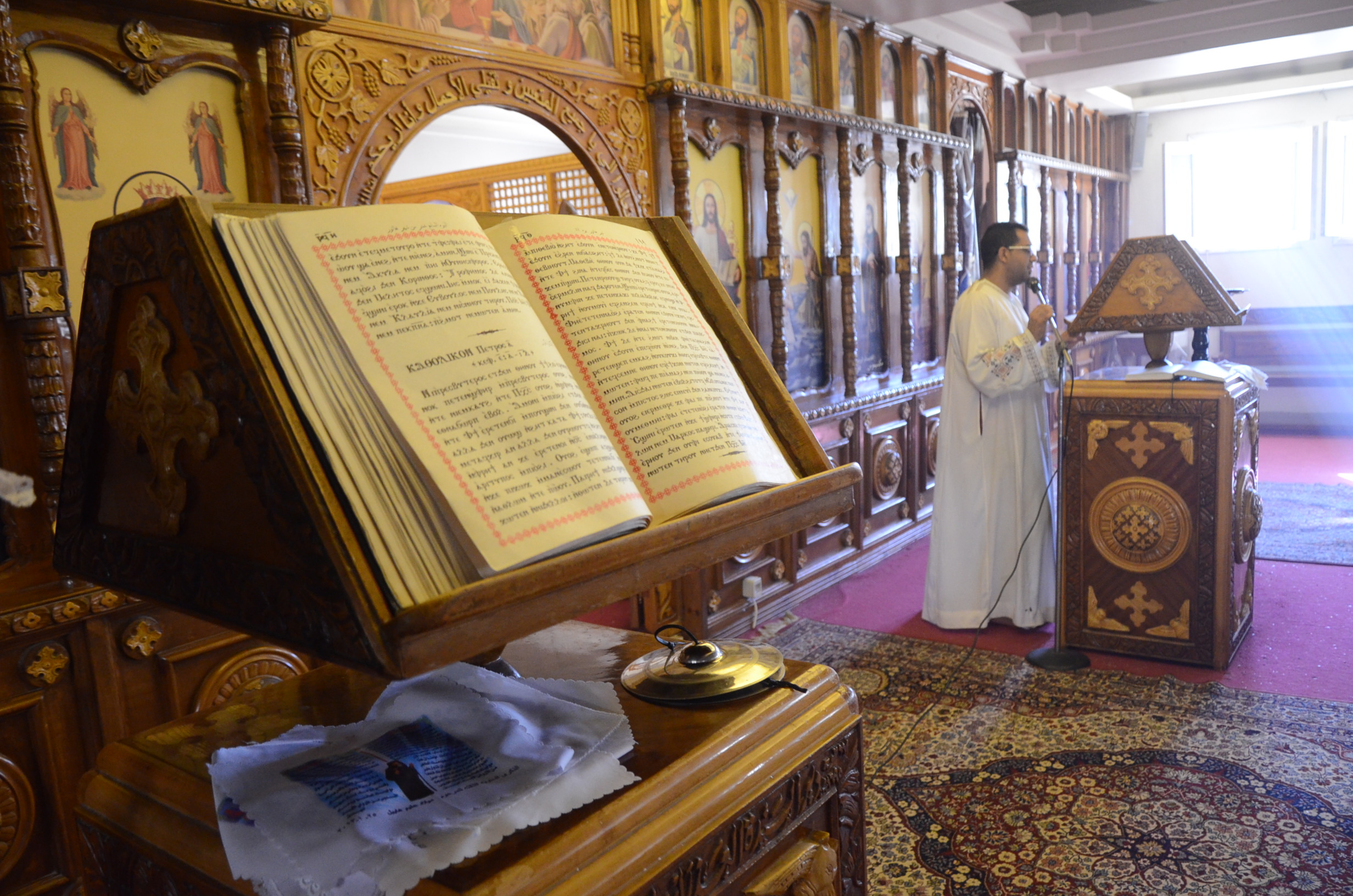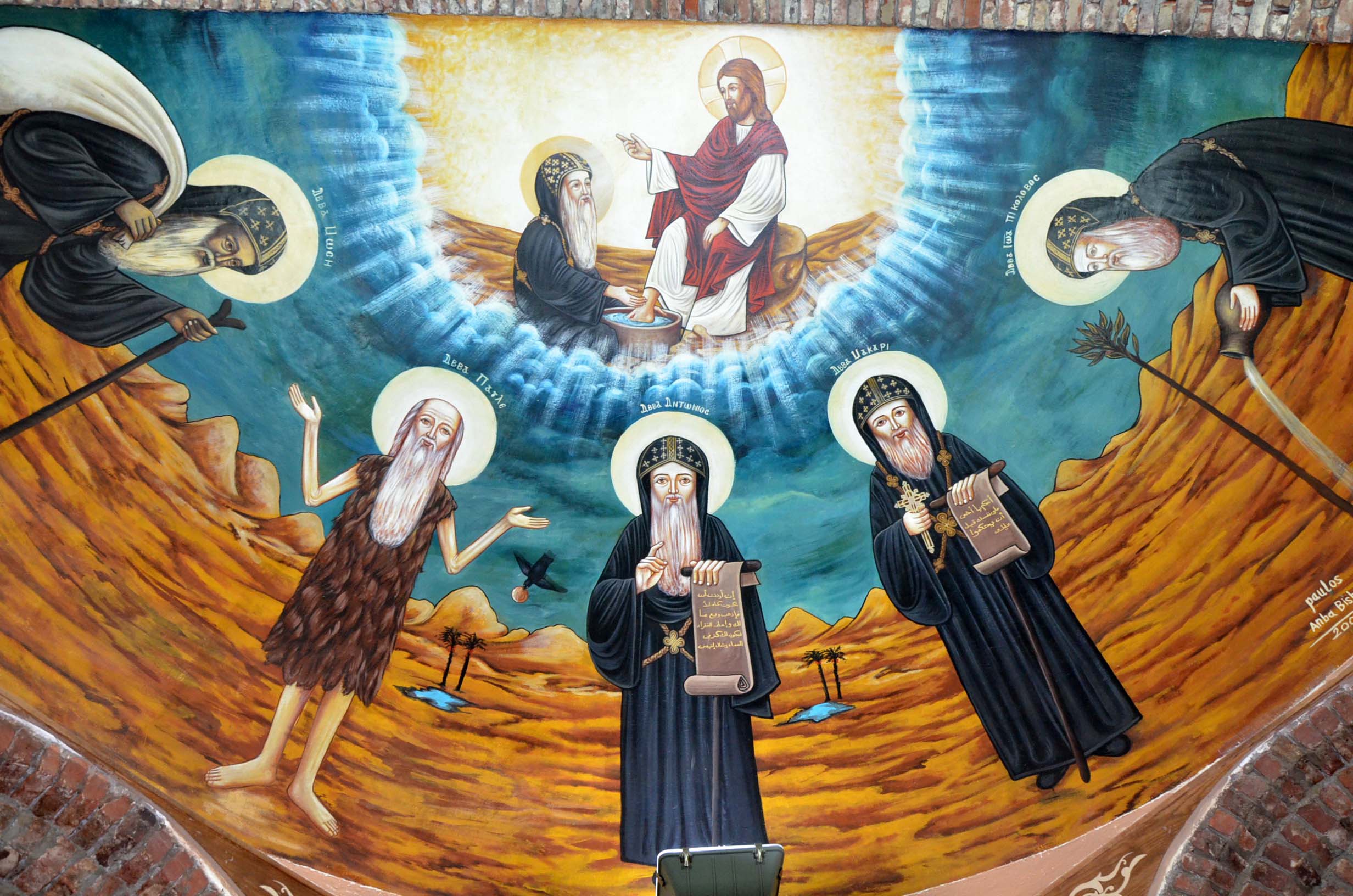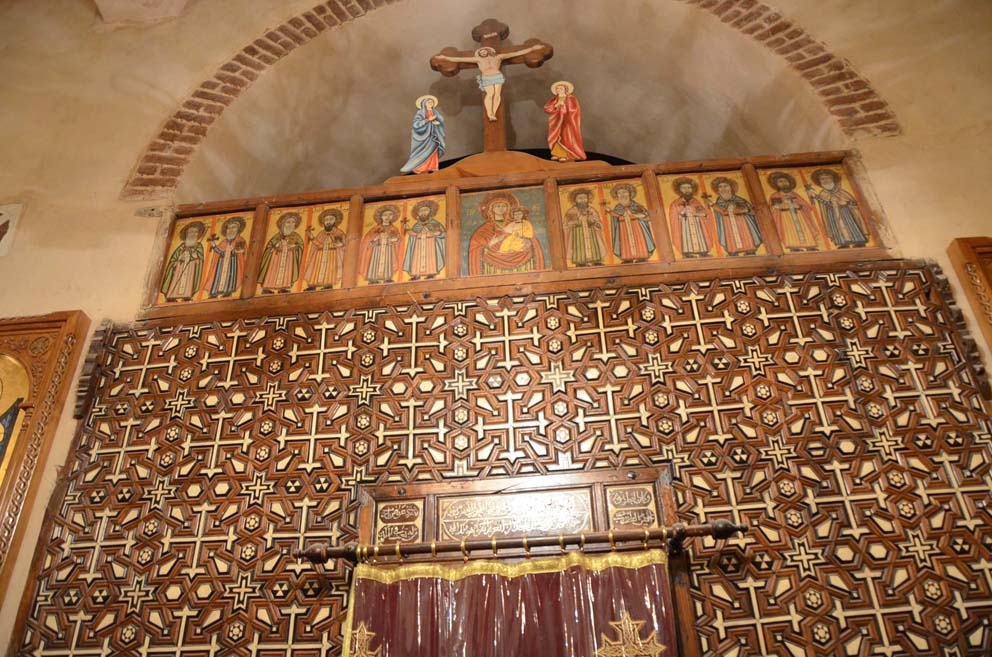Wadi al-Natrun is a depression in the desert named after several names, the first of which was “Sakht Hamat” which means “salt field” due to the abundance of natron salt in it. It was also called “Mount al-Natrun.” In addition, it was known in the fourth century AD as “Wilderness of Shehit,” a Coptic name meaning “the balance of hearts” because it is a place of worship, asceticism, and life reform. This name has a story narrated in the book of the virtues by St. Macarius, which was verified by the scholar Amelino: It was said on the authority of Abu Makar that the Lord of Glory sent him the cherubim, and when he came to him, he put his hand on his heart as if he was weighing or measuring it, so Abu Makar said to him, “What is this?” The cherubim answered him, “I measure and weigh your heart.”
One of the names by which this place was also called is “Al-Askeet”, meaning the hermit, or the hermits, sometimes affiliated with its founder (Askeet Macarius), and it was also known as “Wadi Habib”, which is the name of a man who was there. It was called as well “Al-Hokaria” and currently it is known as “Wadi al-Natrun”.
Wadi El-Natrun is one of the places blessed by the Holy Family during its presence in Egypt. St. Macarius the Great began his ascetic life there, founding the first monastic group in this region. Palladius tells us that St. Macarius the Great went to the desert at the age of thirty, lived there for sixty years and departed in the year (390 AD).
During his presence, they gathered around him all those who wanted a life of solitude, asceticism and prayer until it was said about this place in the year 356 AD that it was inhabited by so many monks to the extent that the hermits and lovers of solitude considered it crowded.
From this monastic community four monastic societies descended, as St. Macarius founded the Baramous Monastery in the memorial of Saints Maximus and Domadeus, and then founded another monastery after his name, which is now known as the Abu Makar Monastery. At the same time, St. John the Short established a monastery in his name, but this monastery was completely demolished in the seventeenth century due to a termite attack on it. Also, Anba Bishoy founded a monastery after his name, which is the monastery of Anba Bishoy now. Thus, these four monasteries were founded simultaneously, in the fourth century, during the life of St. Macarius the Great.
Among the most famous saints of that period, who were discipled by Saint Macarius the Great, are Saints Maximus and Domadeus, sons of the Roman king Valentinus (364-375 AD), Saint Isidore, the priest of Al-Qalali, and the strong and repentant Saint Anba Musa the Black who came to “Al-Askeet” to seek salvation for himself, and the Saint Anba Arsany, a teacher of the children of the kings of Rome, and the Saint Anba Befnotius, the father of “Shehit”, and many others who left their families and embraced a life of loneliness.
Many foreign travelers and fathers of the Western Church visited this region to learn about the monastic life and take the blessing of its inhabitants. Then, they returned to their country, bringing with them what they could of its heritage, writing huge books about it, and establishing the Western monastic systems on its model.
Among the most famous of those who visited the region at that time were “Palladios”, author of the “Paradise of Monks”, Saint Basil, Bishop of Caesarea, Saint Jerome, the historian Rufinos, and Saint John Cassian, as well as many women who came to witness the Egyptian hermits and endured the burden and hardships of traveling such as Saint Melania the Spanish, and Saint Paula, the Italian who accompanied Saint Jerome, as well as that famous princess in the story of Saint Arsanius. This is unlike many other nationalities who came to live in this wilderness to live a life of asceticism like the Egyptians.















